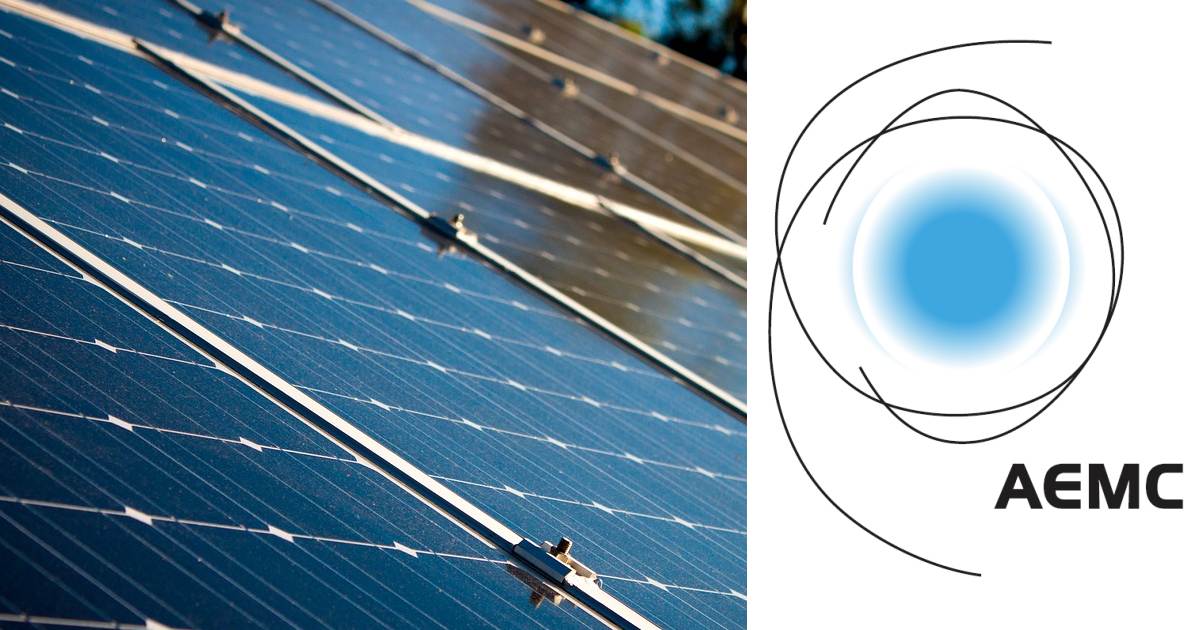
Rooftop solar penetration has reached a stage in Australia where big decisions need to be made by electricity distribution network businesses says the Australian Energy Market Commission (AEMC).
In a new report released this morning, the AEMC is calling on electricity distributors to deliver the “grid of the future” in order to avoid spending billions on new infrastructure; a cost that would ultimately be borne by all Australians.
“Failure to act now would mean either fewer people are able to export solar to the grid, or all consumers will pay more to build new substations and poles and wires that are rarely needed,” said AEMC Chairman John Pierce.
While solar energy drives down wholesale electricity costs, it has to be in the system to do so. Some Distributed Network Service Providers (DNSPs) are already restricting exports in parts of their network that are constrained.
“These restrictions are being imposed as basic connection size or export limits, with some customers facing very low or even zero export limits in areas of the network with high levels of solar penetration,” states the report.
The AEMC says there are 10 key actions to be implemented over a period to deliver the grid of the future, but in the short-term solar power hosting capacity can be improved by:
- Requiring all new solar PV connections to have smart inverter settings capable of providing reactive power control.
- Changes to voltage control and adjusting network nominal voltage to provide more “headroom”1
- Shifting controlled load (such as hot water storage) periods to utilise solar energy output.
The report acknowledges some DNSPs are already implementing strategies such as these.
A Consumer-Driven Grid Of The Future
Mr. Pierce says electricity networks also need to become trading platforms where consumers drive change. He points to distributed energy resources (DERs) such as solar batteries, electric vehicles and smart appliances that can smooth peak grid demand and help to generally stabilise the grid.
“A grid-enabled trading platform will open up a whole new world of opportunities for households and businesses – providing payments for services like frequency control and network support to make the power system stronger and enable higher levels of domestic demand response,” he says.
The AEMC says regulation should focus on outcomes maximising benefits to all consumers, and designed to encourage innovation and competition.
“The potential benefits of efficient integration DER for all customers are substantial and the timely development of a supportive regulatory framework is essential,” states the report.
The AEMC’s “Integrating distributed energy resources for the grid of the future”, can be downloaded here.
Footnotes
- Grid voltage rise is already a significant problem for some Australian solar households. ↩

 RSS - Posts
RSS - Posts



So once again the AEMC is seen as trying to preference existing polluting power companies over renewanbles.
Makes one wonder about the integrity of the AEMC…
https://reneweconomy.com.au/australias-energy-rule-maker-hasnt-a-clue-about-renewable-energy-48728/
Hmmm….. I ‘d like to draw attention to the phrase: ‘“A grid-enabled trading platform will open up a whole new world of opportunities for households and businesses – ….. ” included with the various glowing tributes to the alleged benefits of ‘smart meters’ and reword as:
‘A grid-enabled trading platform, along with accompanying smart meters will open up a whole new world of opportunities for households and businesses and ‘hackers’ ranging from malicious state actors determined to bring the entire grid systems of the USA and its allies to a complete shut-down at a time of their choosing, some millions of ‘script-kiddy wannabe hackers’ aiming for ‘street-cred’, the manufacturers of said devices who are already well aware of known manufacturing flaws in device processors that can be exploited, and of course the naive millions who think that having the ability to control the temperature of their fridge using cloud based software is a ‘cool must-have’ while ignoring the possibility of their house getting flooded because the automatic sprinkler system came on while they were on holiday and never got turned off (which was probably a good thing because it might help put out the fire caused by all the oven hot plates being turned on to full power at the same time as the sprinklers) (via the also hacked “smart” stove) while they were away and never turned off) all because some-one hacked any of or probably all of their cloud , facebook, instagram, messenger accounts along with their wireless computer printer or router devices,some months earlier ……. .
OK, I’ve probably exaggerated a little, but nonetheless my dystopian ‘doom and gloom’ scenario is not as improbable as it sounds in the longer term.
It comes about because… once a ‘programmable smart control’ device is ’embedded’ with its hardware plus softwarel system and installed it immediately begins an inevitable progression towards becoming – at some future point – a ‘legacy’ device.
However, the ‘tools’ available to hackers continue to advance in their capability due to the still rapid rate of technological change. Plus of course, ‘hackers’ tend to be inherently creative. and well know that if an electronic device can be ‘programmed’ to do one thing, it can also be ‘programmed’ to do ‘something else’. even if that ‘something else’ is as simple as programming it to ‘turn off’ when it receives a program instruction to ‘turn on’.
If we assume technological capability doubles only every 3 years rather than two, that still implies that in 3 years time the ‘resource’ available to such miscreants has both lowered in cost and has twice the processing power and speed of today. And in practise its probably more because the devices involved are already somewhat ‘legacy’ when they are installed simply because of the lag between original design and their time of manufacture.
So.. I’m not at all convinced of the overall wisdom of being an ‘early adopter’ of ‘smart devices’, but feel free to disagree.
1 year later what’s changed? That tells you are story about government and its partnership with coal businesses owners.